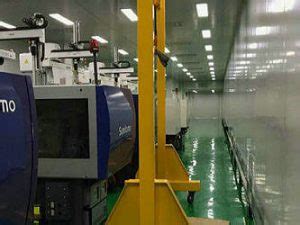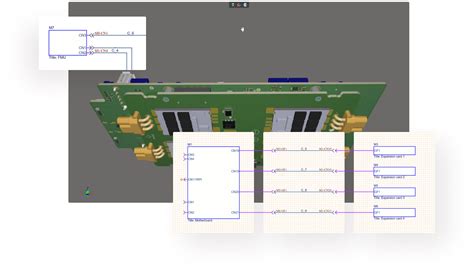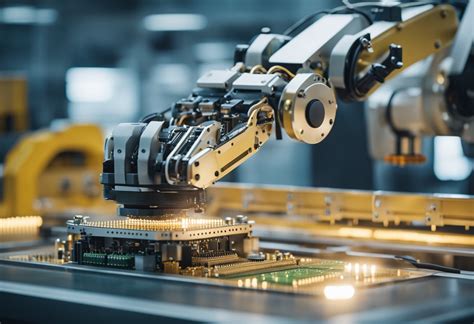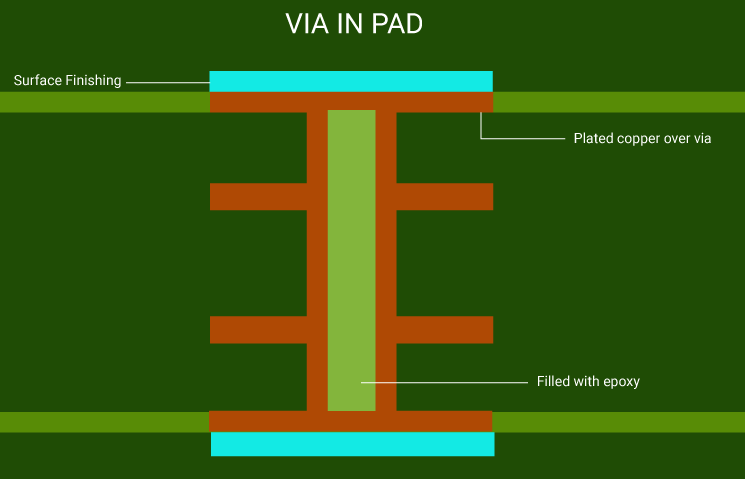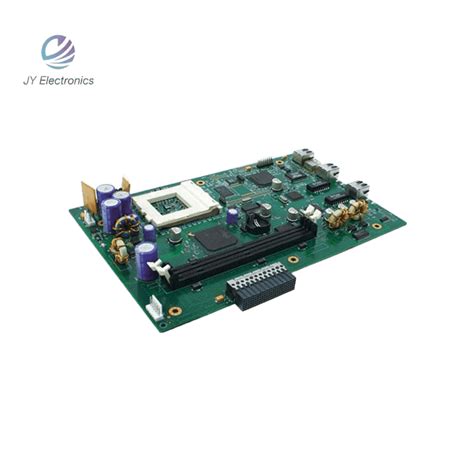Maximizing Efficiency in Contract Manufacturing for Electronic Assembly
Key Takeaways
In the realm of contract manufacturing for electronic assembly, maximizing efficiency is paramount for companies looking to enhance their competitive edge. One of the central tenets in achieving this goal lies in pcb assembly, where streamlined processes and strategic planning are crucial. Effective communication and collaboration with pcb assembly partners ensure that everyone is aligned on project timelines and quality expectations, which can significantly reduce lead times and enhance product delivery. Furthermore, adopting cutting-edge technologies like automated soldering machines and advanced inspection systems contributes to higher precision in pcba production, which in turn minimizes defects and boosts overall productivity. Integrating Lean methodologies can also lead to optimized workflows and reduced waste, making the manufacturing process not only faster but also more cost-effective. By recognizing the importance of these practices, organizations can secure a robust foundation for continuous improvement in their contract manufacturing endeavors, ultimately leading to a more resilient supply chain in the ever-evolving landscape of electronic assembly.
Understanding Contract Manufacturing in Electronic Assembly
Contract manufacturing in electronic assembly has become a cornerstone of the modern electronics industry. This process involves outsourcing the production of electronic components, including PCB assembly and PCBA, to specialized manufacturers. By leveraging contract manufacturing, companies can focus on their core competencies while benefiting from the expertise and efficiency of dedicated producers.
In addition to cost-effectiveness, contract manufacturing provides flexibility in scaling operations and adapting to market demands. The collaboration between a company and its manufacturers often leads to innovations that can significantly enhance productivity. For instance, implementing advanced technologies such as automated assembly lines and integrated supply chain management systems can streamline operations and minimize errors during the pcb assembly process.
To further elucidate the impact of effective contract manufacturing on electronic assembly, consider the following table which highlights key benefits:
| Benefit | Description |
|---|---|
| Cost Efficiency | Reduces overhead costs associated with maintaining in-house production facilities. |
| Scalability | Allows companies to rapidly increase or decrease production in response to market trends. |
| Access to Expertise | Utilizes specialized knowledge and skills that may not be available in-house. |
| Innovation Potential | Facilitates collaboration on new technologies and methods that improve assembly processes. |
The significance of understanding these dynamics cannot be overstated; as technology evolves, so too must strategies for managing relationships with contract manufacturers. Ultimately, by focusing on best practices, businesses can ensure that their engagement in contract manufacturing not only meets but exceeds expectations within the electronic assembly landscape.

Key Challenges in Electronic Assembly and How to Overcome Them
In the realm of contract manufacturing, particularly in electronic assembly, several challenges can hinder productivity and efficiency. One major obstacle is the complexity involved in pcb assembly processes, which often consist of intricate designs and a variety of components. To address this complexity, manufacturers can adopt standardized practices that streamline operations and enhance communication across teams. Additionally, ensuring a skilled workforce is crucial; investing in continuous training for employees can help mitigate issues arising from human error. Another significant challenge lies in material sourcing, as delays or shortages can disrupt the manufacturing timeline. To combat this, companies should foster strong relationships with suppliers to secure reliable access to quality components for pcba. Moreover, implementing robust quality control measures throughout the production cycle can catch defects early, reducing waste and rework costs. By facing these challenges head-on with strategic planning and efficient resource management, manufacturers can significantly improve their operations within the competitive landscape of electronic assembly.
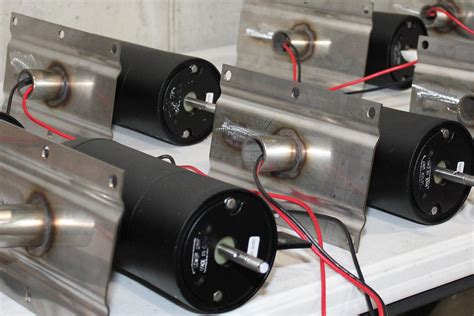
Best Practices for Enhancing Efficiency in Manufacturing Processes
In the realm of contract manufacturing, particularly in electronic assembly, the application of best practices is vital for improving efficiency. One core area to focus on is implementing stringent quality control measures, which help in minimizing errors during the pcb assembly process. Adopting a standardized approach not only enhances the quality of the finished products but also streamlines operations, allowing for quicker turnaround times. Additionally, fostering effective communication between teams can significantly reduce misunderstandings and delays. Utilizing project management tools ensures that all stakeholders are aligned and informed about progress and challenges.
Furthermore, embracing a lean manufacturing philosophy can lead to notable improvements in workflow efficiency. This involves identifying and eliminating waste throughout the pcba production phases. By continuously assessing and optimizing each step—from design through to assembly—manufacturers can enhance productivity while reducing costs. Moreover, investing in employee training is crucial; well-informed staff are better equipped to handle complex tasks efficiently and uphold high quality standards during the production process.
Another key practice is integrating advanced technologies such as real-time monitoring systems that provide critical insights into operational performance. These tools allow manufacturers to quickly identify bottlenecks and make data-driven decisions to enhance production processes. In summary, a focus on quality control, communication, lean practices, training, and technology integration collectively forms a robust strategy for enhancing efficiency in contract manufacturing for electronic assembly.
Innovative Technologies Transforming Electronic Assembly
The landscape of contract manufacturing is undergoing a significant transformation, particularly in the realm of electronic assembly. Innovations in technology have paved the way for improved pcb assembly processes, making them faster, more accurate, and cost-effective. One of the key drivers behind this evolution is the adoption of advanced automation technologies. Automated equipment can enhance precision in pcba (printed circuit board assembly), significantly reducing human error and increasing throughput. Additionally, innovative software solutions are being utilized to streamline workflow management and enhance communication among stakeholders, providing real-time visibility into production schedules and inventory levels.
Furthermore, the integration of IoT (Internet of Things) devices within manufacturing processes allows for smarter operations by enabling predictive maintenance and remote monitoring. This connectivity helps manufacturers anticipate equipment failures before they occur, minimizing downtime and maximizing productivity. Additionally, utilizing robotics in areas such as material handling or soldering can contribute to further efficiency gains in pcb assembly lines.
Incorporating 3D printing technology for prototyping also stands out as a game-changer in electronic assembly. This approach allows for rapid design iterations and reduces lead times significantly. As companies explore these innovative technologies, achieving higher efficiency levels while simultaneously reducing costs becomes not only attainable but essential for remaining competitive in a rapidly evolving industry landscape. As the sector continues to embrace these advancements, it becomes evident that contract manufacturing will be increasingly defined by its ability to leverage cutting-edge solutions to meet market demands effectively.

Process Optimizations for Cost Reduction in Contract Manufacturing
In the competitive landscape of contract manufacturing for electronic assembly, optimizing processes is vital for reducing costs while maintaining quality and efficiency. Central to this optimization is the concept of Lean Manufacturing, which focuses on minimizing waste and maximizing value. Strategies such as streamlining workflows, improving inventory management, and integrating real-time data analytics can significantly enhance productivity. One effective approach is adopting Just-in-Time (JIT) manufacturing, which ensures that components arrive precisely when needed, thereby reducing holding costs and minimizing excess inventory.
Additionally, incorporating automation into the pcb assembly process can lead to substantial cost reductions. Automated systems allow for greater precision in tasks such as soldering and inspection, reducing errors that can lead to costly rework. Furthermore, innovative technologies like Robotics Process Automation (RPA) can smooth out production bottlenecks while increasing throughput rates.
“Continuous improvement should be at the heart of any successful contract manufacturing strategy.”
To further enhance efficiency, companies should invest in employee training programs that focus on the latest techniques in pcba design and engineering. This fosters a culture of skill development essential for adapting to new technologies as they arise.
By merging these strategies with effective risk management protocols, contract manufacturers can not only reduce costs but also position themselves as leaders in the fast-changing environment of electronic assembly. Prioritizing these process optimizations ensures a robust foundation for ongoing operational success.
The Role of Automation in Maximizing Productivity
In today’s competitive landscape, automation plays a pivotal role in boosting productivity within the realm of contract manufacturing for electronic assembly. By integrating advanced technologies such as robotics and artificial intelligence, manufacturers can streamline their pcb assembly processes, ultimately enhancing efficiency and reducing turnaround times. For instance, automated systems can conduct precise soldering and component placement, which are critical in maintaining the quality of pcba. Additionally, automation minimizes human error, ensuring that each assembly meets stringent quality standards. This level of accuracy is vital in reducing waste and rework costs, which directly impacts the bottom line for contract manufacturers. Moreover, the data collected through automated systems allows for real-time monitoring of production processes, enabling managers to quickly identify bottlenecks and implement process optimizations. As a result, the strategic use of automation not only maximizes productivity but also positions manufacturers to adapt swiftly to changing market demands while maintaining a competitive edge in the industry.
Case Studies: Successful Strategies in Contract Manufacturing
In the realm of contract manufacturing for electronic assembly, numerous organizations have pioneered successful strategies that not only optimize their processes but also significantly enhance their overall productivity. For instance, a leading firm in the pcb assembly sector implemented comprehensive training programs for their workforce, focusing on fostering a culture of continuous improvement. This initiative led to a remarkable increase in efficiency, as workers became adept at identifying bottlenecks in the pcba process. Another notable case involved the integration of advanced automation technologies that streamlined the assembly line operations. By incorporating robotics, this company was able to reduce cycle times and minimize errors associated with manual handling, thus ensuring higher quality in product output.
Furthermore, some businesses have capitalized on data analytics to refine their manufacturing practices. By employing real-time monitoring systems, they can track production metrics and make informed decisions that drive process optimizations. For example, predictive maintenance enabled one manufacturer to foresee equipment failures before they occurred, significantly reducing downtime and maintenance costs. These case studies illustrate how targeted strategies in contract manufacturing can not only meet but exceed industry standards by leveraging innovations and best practices that focus on enhancing efficiency and reducing costs throughout the electronic assembly landscape. As companies continue to share insights from these successful models, it becomes evident that embracing such approaches is vital for staying competitive in today’s dynamic market environment.
Future Trends in Electronic Assembly and Contract Manufacturing
As the landscape of contract manufacturing for electronic assembly evolves, there are several emerging trends that promise to reshape the industry. First and foremost, the increasing demand for high-quality, cost-effective PCB assembly solutions is driving manufacturers to adopt more sophisticated technologies. This includes advanced PCBA methods that incorporate artificial intelligence and machine learning, enabling an unprecedented level of customization and efficiency in production lines. Furthermore, sustainability is becoming a critical focus; companies are increasingly looking to implement environmentally friendly practices within their manufacturing processes. The integration of eco-conscious materials and energy-efficient machinery not only reduces waste but also enhances the company’s reputation among consumers who prioritize green practices.
Additionally, globalization continues to impact supply chains significantly. Companies are leveraging contract manufacturing partnerships across different regions to optimize costs and reduce lead times. This international approach allows manufacturers to respond more swiftly to market demands while maintaining product integrity. The advent of Industry 4.0 also plays a significant role in shaping future practices in electronic assembly, as greater connectivity between machines leads to smarter manufacturing systems capable of real-time monitoring and predictive maintenance.
Moreover, as consumer electronics become more complex, ongoing innovation in electronic assembly processes will be essential for meeting the intricacies of modern devices. Manufacturers must focus on enhancing skills through continuous training programs to keep pace with technological advances. In conclusion, aligning operations with emerging trends will not only improve efficiency but also position companies favorably within a competitive marketplace characterized by rapid change and evolving consumer expectations.
Conclusion
In the rapidly evolving landscape of contract manufacturing for electronic assembly, it is crucial to remain vigilant about emerging trends and best practices. Adopting a comprehensive approach that incorporates innovative technologies and prioritizes process optimizations can significantly enhance productivity in pcb assembly environments. For instance, leveraging the capabilities of automation not only streamlines workflows but also minimizes human error, leading to higher quality in pcba outputs. Furthermore, understanding the unique challenges faced in electronic assembly allows manufacturers to implement targeted solutions that prevent bottlenecks and inefficiencies. As we look towards the future, industry players must focus on continual learning and adaptability to seize opportunities that drive success in their respective fields. By embracing new methodologies and technologies, businesses can ensure they remain competitive while effectively meeting the demands of a dynamic market landscape.
FAQs
What is contract manufacturing in electronic assembly?
Contract manufacturing in electronic assembly refers to the outsourcing of the production process, where a company hires another manufacturer to produce pcb assembly and related components. This allows companies to focus on their core competencies while leveraging specialized expertise.
How does automation impact efficiency in electronic assembly?
Automation enhances efficiency by streamlining production processes, reducing manual labor, and minimizing errors. By integrating robotics and advanced machinery, manufacturers can achieve faster pcba production cycles and consistent quality.
What are the key challenges faced in contract manufacturing for electronic assembly?
Key challenges include managing supply chain disruptions, ensuring quality control, and maintaining clear communication between partners. Each of these factors can affect timelines and ultimately impact costs.
What innovative technologies are currently transforming electronic assembly?
Technologies such as the Internet of Things (IoT), Artificial Intelligence (AI), and machine learning are significantly enhancing capabilities. These innovations allow for real-time monitoring of production lines and predictive maintenance, leading to improved efficiency in pcb assembly operations.
How can manufacturers optimize processes to reduce costs?
Manufacturers can optimize processes by conducting thorough analyses of their workflows, implementing lean manufacturing techniques, and investing in training for their workforce. This not only reduces waste but enhances productivity across pcba operations.

